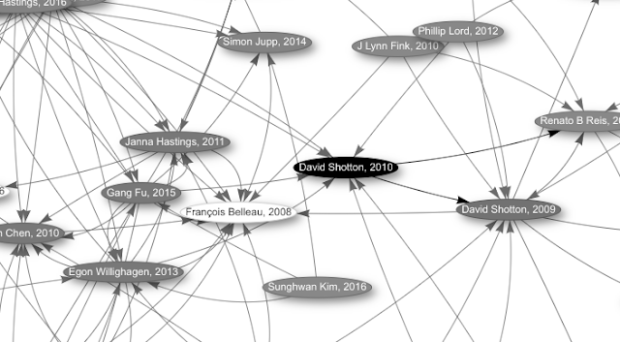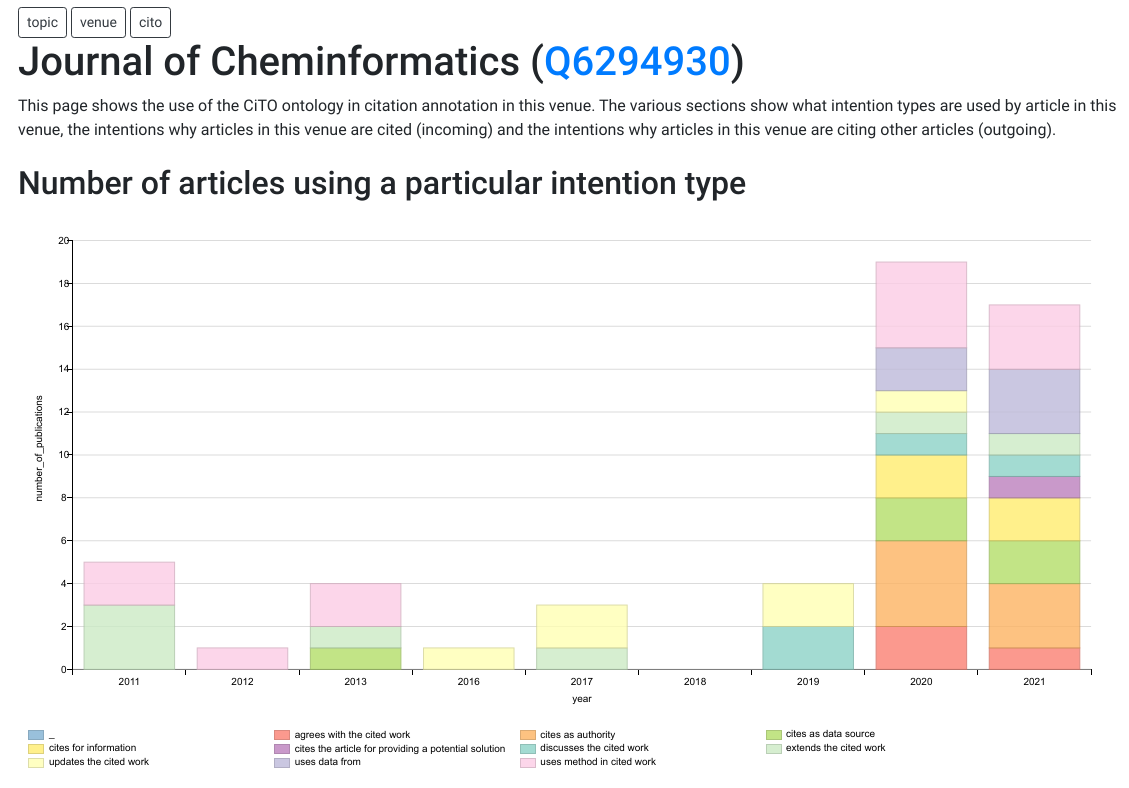
A high citation count is widely seen as an indication of impact. However, we often do not know why an article is cited.
While it is quite reasonable to assume by far most citations are supportive, sometimes articles get cited for being controversial.
But not every positive citation is the same either.
Sometimes you cite an article because you use a method explained in that article and sometimes you cite an article you do not have strong opinions about, but because you feel obliged to do so, just because the paper is authoritative.
In 2012, Perroni and Shotten addressed this limitation of current citation practices by developing Citation Typing Ontology (CiTO).
They created citation intention categories that can be used as annotations in the reference list or for inline citations in the text.
For example, if an author has used a method in a paper that they are citing, they can add the annotation cito:usesMethodIn to indicate as such in their reference list.
Maybe an author disputes the findings of a paper, in which case they might annotate their reference with cito:disagreesWith.
But proposing a solution is not the same as solving the problem. And unfortunately, uptake of the ideas has been limited.
While the CiteULike reference manager had support, this service was since decommissioned.
Therefore, the editors of the Journal of Cheminformatics developed a proposal to pilot a workflow enabling CiTO annotations to be used in our journal (see also these author guidelines).
The aim is to test both the uptake by authors and to determine how this could work in practice.
To keep things simple, we came up with a subset of CiTO annotations that we recommended authors use (authors can use any CiTO annotation).
While inline annotations are preferential, we recognized this would be more complicated to introduce, and thus we decided to start with only annotating the reference list.
Uptake
Since the start of the pilot, one additional editorial and six journal articles have adopted the approach.
Some authors added intentions for many more citations than we expected, and the diversity of used CiTO annotations is also much higher than the pilot suggests.
We have been working on downstream tools to use and further distribute the information.
One of these is the combination of Wikidata and Scholia which stores and visualizes OpenCitations and PubMed citation data.
We annotated the citations with the CiTO annotation, and the statistics page shows that on June 13 results CiTO annotations are found in Wikidata for 56 articles distributed over 24 different journals.
The Journal of Cheminformatics is only one possible source, but the only journal. The typed citations point to more than 250 articles in more than 100 different journals.
So far, over 300 citations have been annotated with more than 370 types (there can be more than one intention to cite an article). Using this downstream tool, we can track the uptake:

But various Scholia pages allow us to explore the results in more detail. For example, it shows us that on 2020 nine different citation intentions were used in Journal of Cheminformatics articles, as visible in this Scholia figure:

Current Limitations and Next Steps
The current approach is a bit limited. In the pilot articles, the CiTO tags are embedded as annotations in the reference list.
The downside of this approach is that if an article is cited more than once in an article, you lose the connection between the typing and the individual citation.
We want to be able to offer inline CiTO annotations, but this requires careful consideration and further development of the workflow.
Another problem is that addition of the CiTO tags is a manual process for the authors, as bibliography programs do not currently support their use.
To make life easier for authors, and following a Twitter discussion in Spring 2021, we developed a Markdown template with native CiTO support. Here, the author merely indicates the CiTO type when they cite the article.
The manuscript can then easily be saved as a Word file to enable submission to the journal. The Journal of Cheminformatics template is available from our GitHub repository, and authors and editors should feel free to adapt it to their own journal needs.
This summer we hope to make this template available via RStudio.
An easier limitation to address is the automation of the extraction and propagation of the citation typing data.
Currently, this is still done manually, which obviously does not scale too well. This too, is why we took our time to start slowly with the pilot and monitor the issues we encountered.
But we are now very confident the approach is ready for the next phase and we welcome other journals to start considering adopting the pilot too.
At a technical level, we will develop source code that can extract the CiTO typing information from the XML source (JATS format) of the BMC articles and automate adding this information to Wikidata.
Conclusion
The progress of the pilot is going very satisfactory and we are confident the Journal of Cheminformatics is ready to bring this long time wish from the scientific community to modern publishing.
The pilot has served as a proof-of-concept and has demonstrated that there is interest among the community for introducing these as standard. The uptake has so far been low, but we are satisfied with how it has been running.
We know that there are limitations that need to be addressed to develop this idea further and allow it to be rolled out more widely in a smooth and non-disruptive manner.
Further uptake of this idea of typed citations depends on the combined willingness of journal editors, authors, publishers and indexing services alike.
We welcome further engagement in the CiTO strategy, and we would be happy to advise any interested parties on our experiences in running the pilot.
Editors of journals are strongly encouraged to contact the Journal of Cheminformatics about joining the pilot.
Acknowledgements to the editors of Journal of Cheminformatics editors for their valuable feedback on this post.
Comments